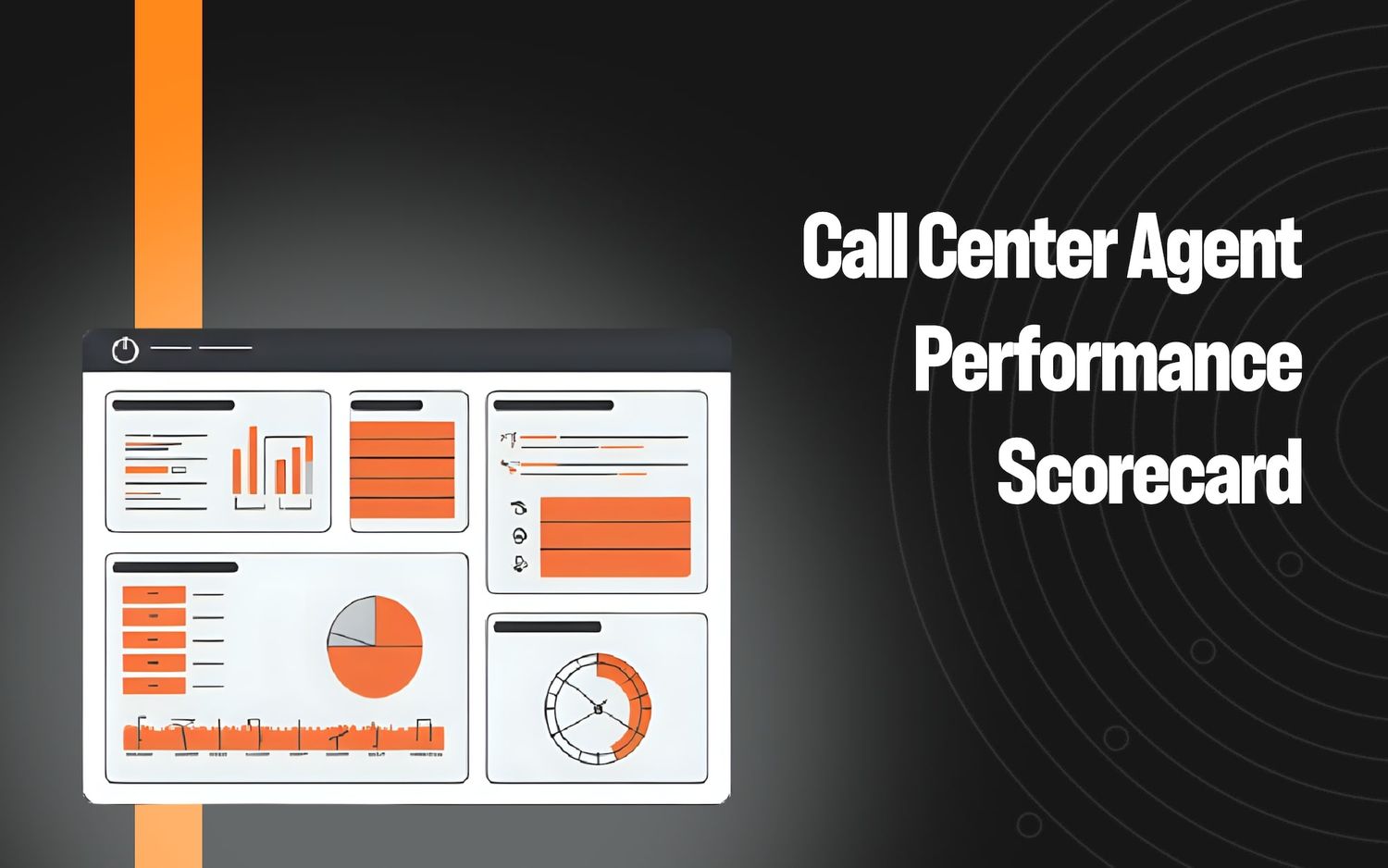Call Center Real-Time Reporting: Tools, Metrics & Methods


Key takeaways:
- Call center real-time reporting helps managers detect sentiment shifts, intent, and root causes during live calls, enabling immediate action.
- It combines live transcription and language understanding to surface insights that improve on-the-spot decisions.
- The reporting also typically offers dashboards with live scores that highlight at-risk conversations and agent performance issues with full context.
Real-time reporting collects and analyzes data as calls are happening, not just after the fact, and includes tools like:
- Live dashboards that track key performance metrics.
- Automated alerts that notify supervisors of issues like long hold times or rising customer frustration.
- Live sentiment analysis that shows how customers are feeling during their conversations.
Such real-time data lets managers see what’s happening as it happens, allowing them to make decisions right away rather than waiting for end-of-day or end-of-week reports.
Below, we dive into how real-time reporting works in call centers, explore how AI improves it, and introduce five tools offering key features to look for in an effective solution. We begin that list with Level AI, our own customer experience platform.
What Call Centers Actually Need From Real-Time Reporting
Traditional real-time reporting tools show basic numbers like call volume, average handle time, first call resolution, call abandonment rate, and service levels. But they don’t explain what’s causing those numbers to change.
For example, if call wait times are going up, is it because more calls are being transferred? Are agents not following their schedules? Or is there a broken process that’s slowing things down?
Many dashboards also use simple alerts based on fixed rules. Supervisors may notice something going wrong during a shift, but figuring out the reason takes time — and that delay can lead to missed goals or unhappy customers.
What call centers need is the ability to understand what’s happening and why, so they can fix problems quickly, not after it’s too late.
That’s where AI comes in. It analyzes conversations in real-time and detects subtle patterns in the way customers express themselves. For example, it can show that a given customer is getting more frustrated the longer a call lasts, or that certain issues are coming up and the agent isn’t sure how to respond.
Instead of staring at a screen full of numbers that update every half hour, teams want systems that do more than report problems; they want help solving them.
AI-powered reporting tools make this shift possible by showing trends, indicating root causes, and offering insights that help staff make better data-driven decisions.
5 Real-Time Reporting Platforms for Call Centers
1. Level AI: Real-Time Insights That Drive Better Conversations
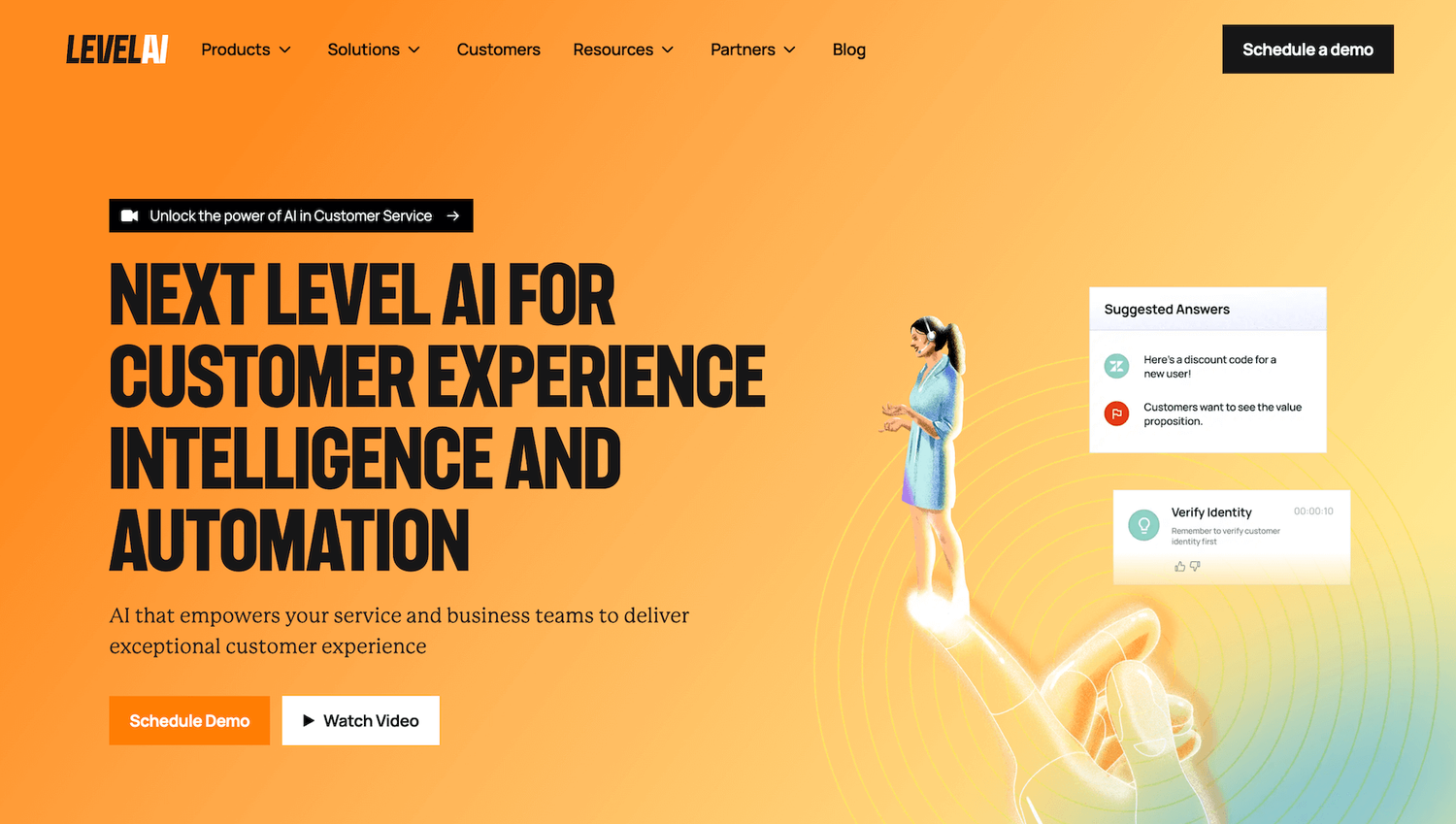
Level AI is a real-time reporting and CX platform that helps contact centers act on live operational data as conversations unfold.
At its core are technologies like automatic speech recognition (ASR), real-time transcription, natural language understanding (NLU), and semantic intelligence.
Together, these give Level AI near-human understanding of spoken conversations, allowing it not just to transcribe speech, but to truly understand what’s being said, including the speaker’s intent and emotional tone. This is a major step up from traditional rules-based systems that rely on simple keyword matching.
For example, consider two customers: one says, “Can you help me check the charges on my last statement? I just want to confirm a few things,” while the other says, “I see an unfamiliar charge on my account statement.”
A keyword-based system might classify both as generic “billing inquiries,” since they share terms like “charges” and “statement.” But the context and urgency are completely different. The first is a casual, low-priority account review. The second might warn of a potentially serious issue, perhaps even fraud, that demands attention.
Level AI’s natural language understanding picks up on that difference. It detects the concern and implied distrust in the second customer’s tone and phrasing, correctly identifying it as a request for investigation. This kind of intent inference is what sets Level AI’s customer experience analytics solutions apart.
In addition to recognizing intent, Level AI also detects a wide range of emotions with high accuracy, including anger, worry, disappointment, admiration, and gratitude. This emotional intelligence gives contact centers real-time insight into customer sentiment, helping supervisors respond proactively to rising frustration, performance dips, or bottlenecks as they happen.
Rather than overwhelming users with a flood of metrics and alerts, Level AI filters for what matters most and when it matters most. It associates visible symptoms, like rising handle times, with their root causes, such as agent confusion or unresolved objections.
This same intelligence also powers Level AI's Virtual Agent, which brings human-like understanding and automation to self-service workflows and agent assistance.
In the next section, we’ll explore the specific features that make Level AI’s real-time reporting so effective, all powered by these core technologies.
Monitoring Live Calls with Full Context
Level AI’s Real-Time Manager Assist helps you proactively monitor calls, assess agent performance, and uncover insights from customer sentiment analysis — so you can resolve issues as they happen.
It offers two main dashboards, which we describe in detail below:
- A live dashboard to monitor ongoing calls, centralizing KPIs to signal which calls need immediate attention.
- A dashboard aggregating conversation stats over an entire day.
See What’s Happening as Conversations Unfold
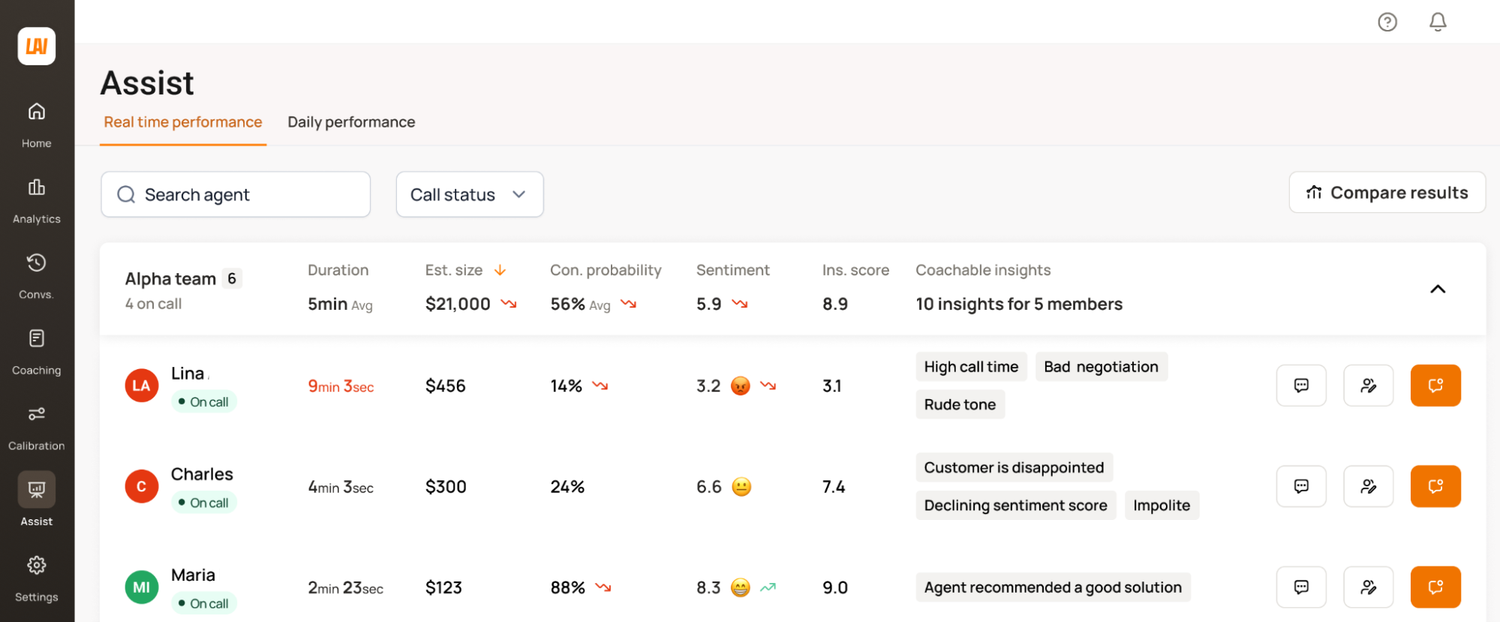
The Real-Time Performance dashboard uses conversation analytics software to show metrics such as:
- Agent name
- Call duration
- Estimated deal size
- Conversion probability
- Customer Sentiment Score
- Agent InstaScore
- Coachable Insights
These give you situational awareness about what’s currently happening in your contact center and help you prioritize calls requiring intervention.
Imagine that a customer is discussing the renewal of a high-value enterprise product. The potential deal size is well above average, but the conversation isn’t going well. The customer’s tone has started to shift, and Level AI’s proprietary Sentiment Score is beginning to dip, so you decide to immediately click into the live conversation to see what’s happening.
The Sentiment Score is a real-time metric that reflects the customer's emotional state at any given point in the interaction. Scored on a scale from 0 to 10, where 0 indicates extremely negative sentiment and 10 indicates highly positive sentiment, this score offers a fast and accurate snapshot of how the customer is feeling.
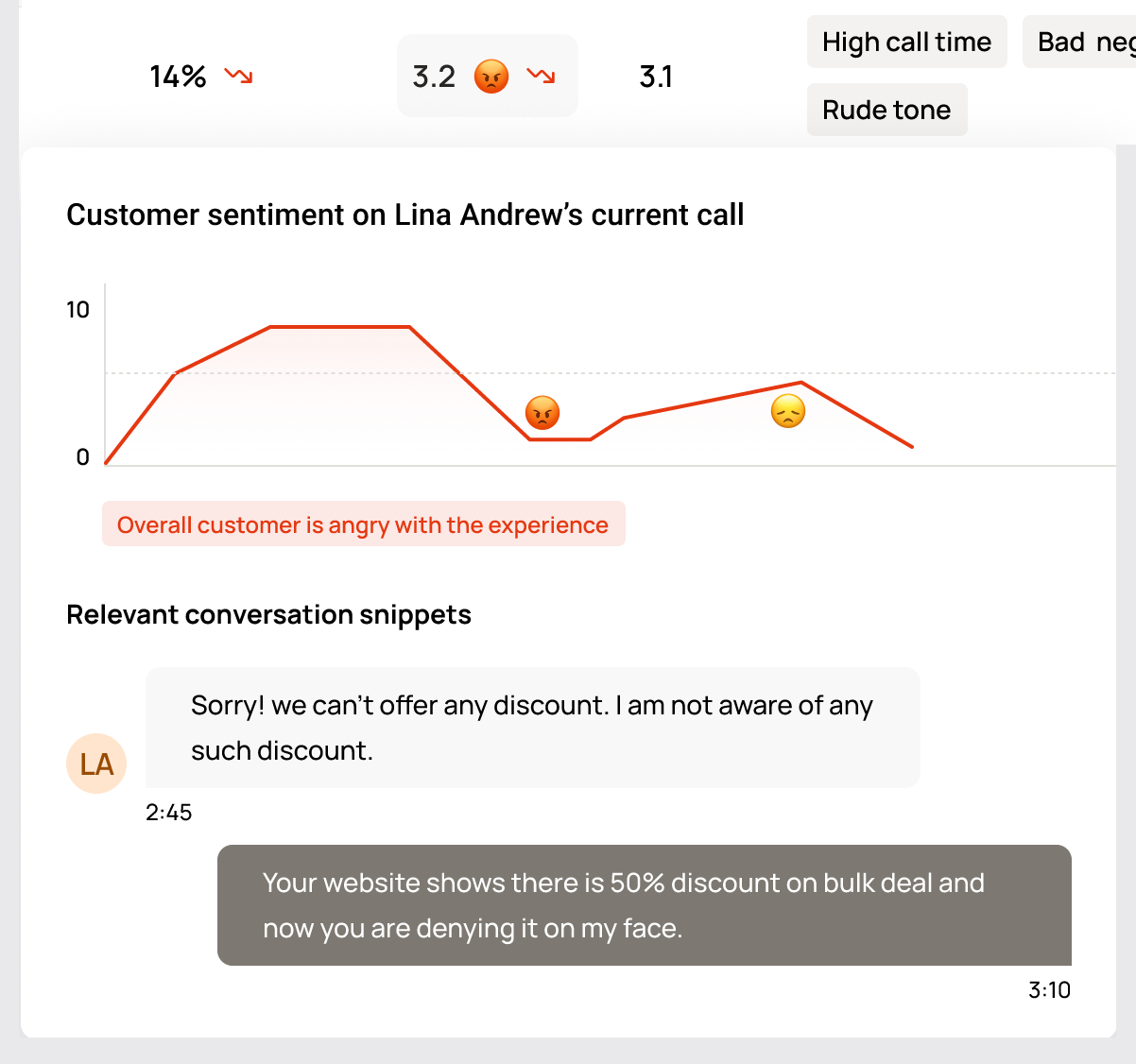
From the Manager Assist dashboard, you can click into any conversation or KPI to view supporting details. In this case, you can choose to listen in on the call directly.
If needed, you can activate call whispering to silently coach the agent with live suggestions on how to turn the conversation around and improve customer satisfaction without the customer hearing a thing.
Tracking Agent Performance as It Happens
Real-time reporting isn't just about monitoring customer interactions. It's also about understanding agent performance in the moment, something call center tracking system software like Level AI delivers in real-time. InstaScore distills live performance data into a simple, actionable value that makes this possible.
Clicking on any agent’s InstaScore, a single, easy-to-read score ranging from 1 to 10 reflecting how well an agent is meeting your company’s quality rubrics, displays a detailed breakdown showing where the agent is excelling and where there’s room for improvement.

Scoring is based on rubrics that can be fully customized or selected from a library of ready-made templates. These rubrics often include core criteria like professionalism, subject matter expertise, and adherence to company policies.
InstaScore is calculated using a mix of behavioral verification, qualitative indicators (like customer sentiment and tone), and quantitative thresholds (for example, the amount of dead air during a call). The result is an assessment that spans the full customer support journey, allowing you to quickly pinpoint the phases where agent productivity can be increased.
In addition to the score itself, the system surfaces Coachable Insights: specific behavioral patterns and performance traits that reveal an agent’s key strengths and opportunities for growth. These insights let you offer clear, focused coaching that drives meaningful improvement.
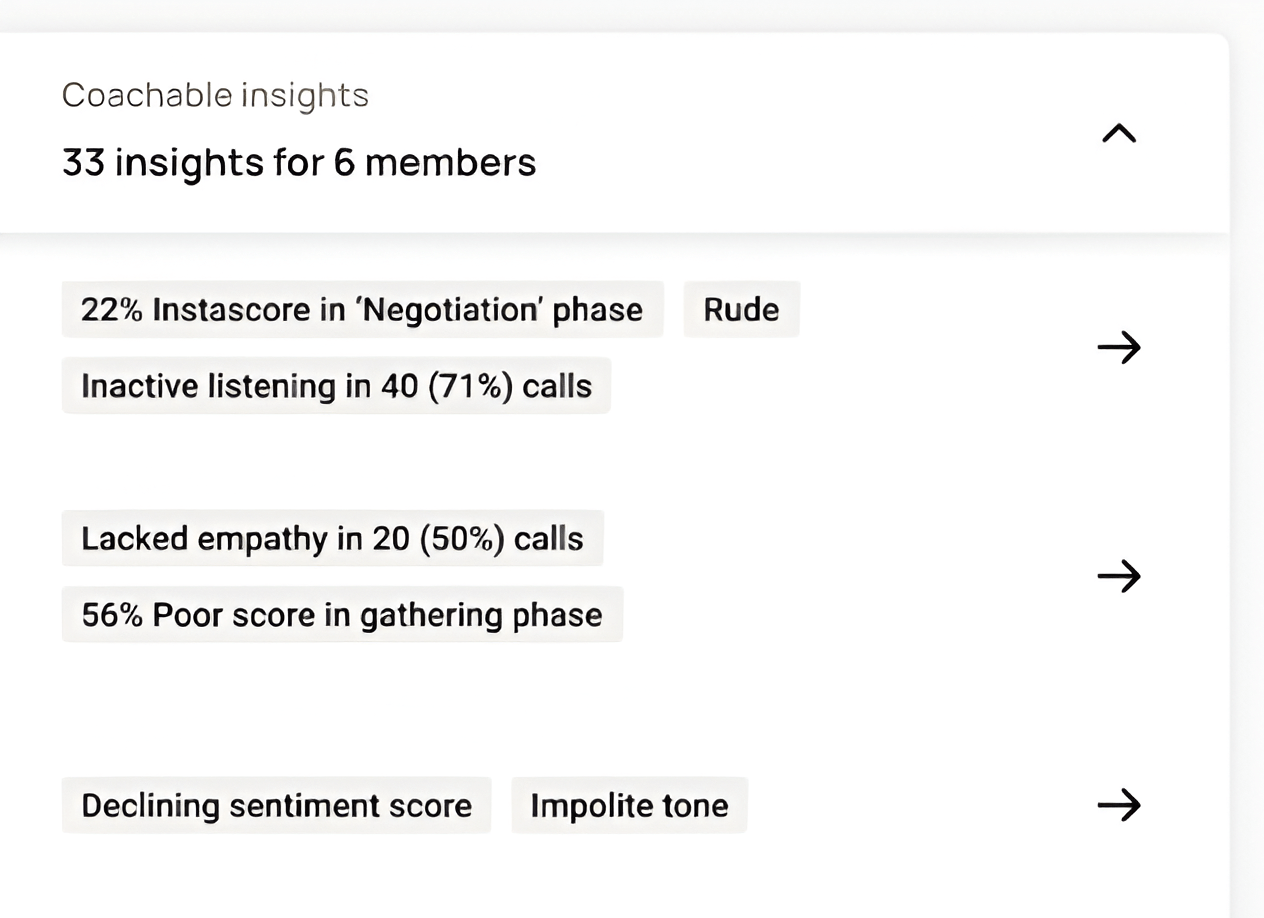
Reviewing Daily Conversation Trends at a Glance
The Daily Performance dashboard gives you a high-level snapshot of how the entire contact center is performing over the course of a day. It aggregates both quantitative and qualitative key performance indicators from every customer interaction, presenting them in a single, comprehensive view.
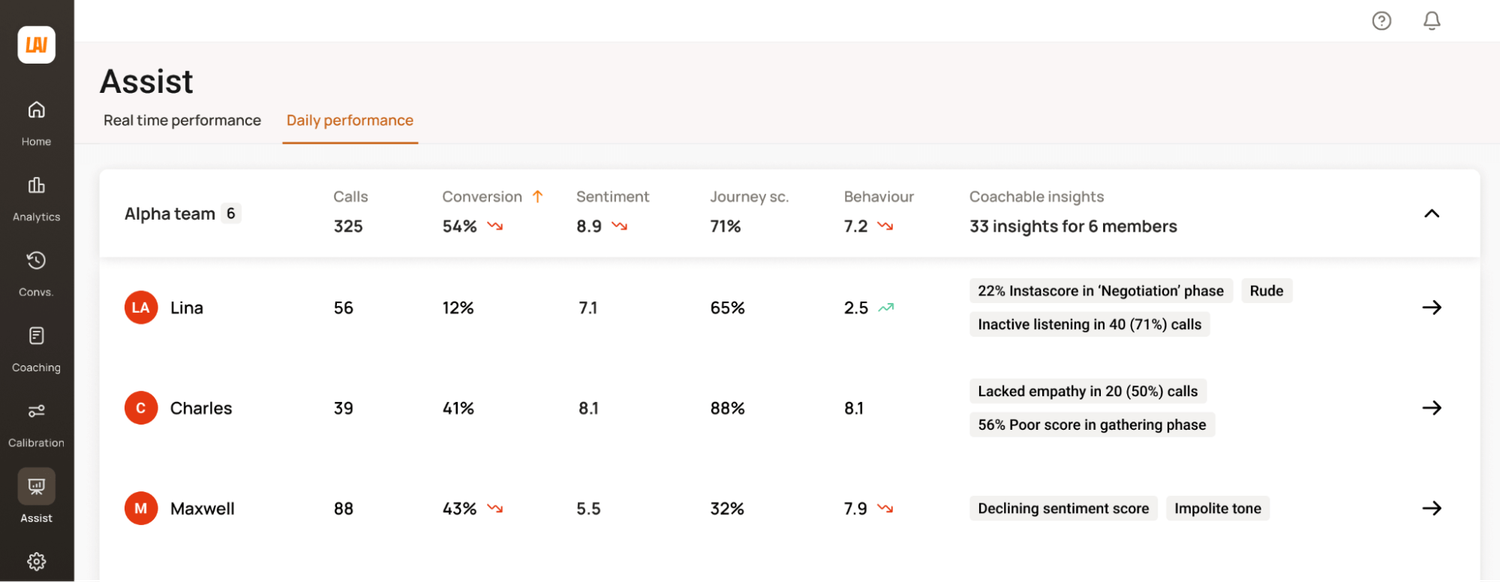
By combining data points like call volume, AHT, and conversion probability with more nuanced indicators such as Sentiment Score and InstaScore, the dashboard offers a picture of performance so far in the day. You can quickly identify which agents are earning the highest Sentiment Scores, which conversation types are consuming the most time, and whether patterns, like a spike in negative sentiment, correlate with particular shifts, topics, or agents.
This real-time visibility helps you connect outcomes to behaviors in order to spot coaching opportunities, escalate emerging issues, or recognize high-performing agents. For a deeper dive, each interaction on the dashboard links to a full transcript, making it easy to investigate specific calls or trends in greater detail:
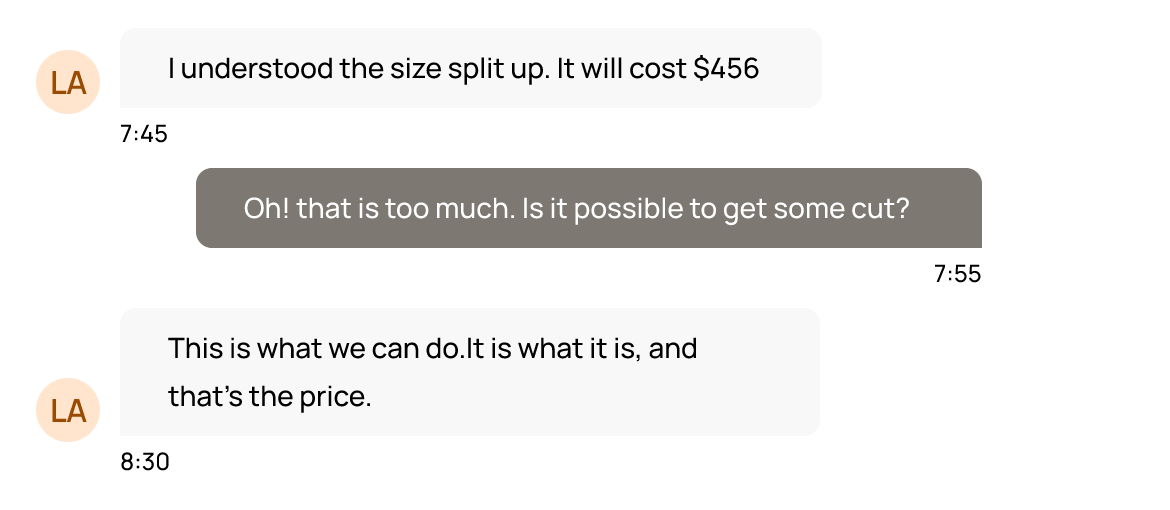
Getting Notified When Conversations Need You Most
For those not wanting or able to monitor a dashboard, Real-Time Manager Assist keeps supervisors in the loop by delivering live notifications when a conversation starts to go off track and needs intervention. These alerts are fully customizable, allowing teams to define the exact triggers that matter most, such as a sudden drop in customer sentiment or repeated escalation keywords.
Once triggered, the alert is sent immediately through the communication channel of your choice, whether that’s Slack, Microsoft Teams, or another platform, so managers can act in the moment without needing to monitor every interaction.
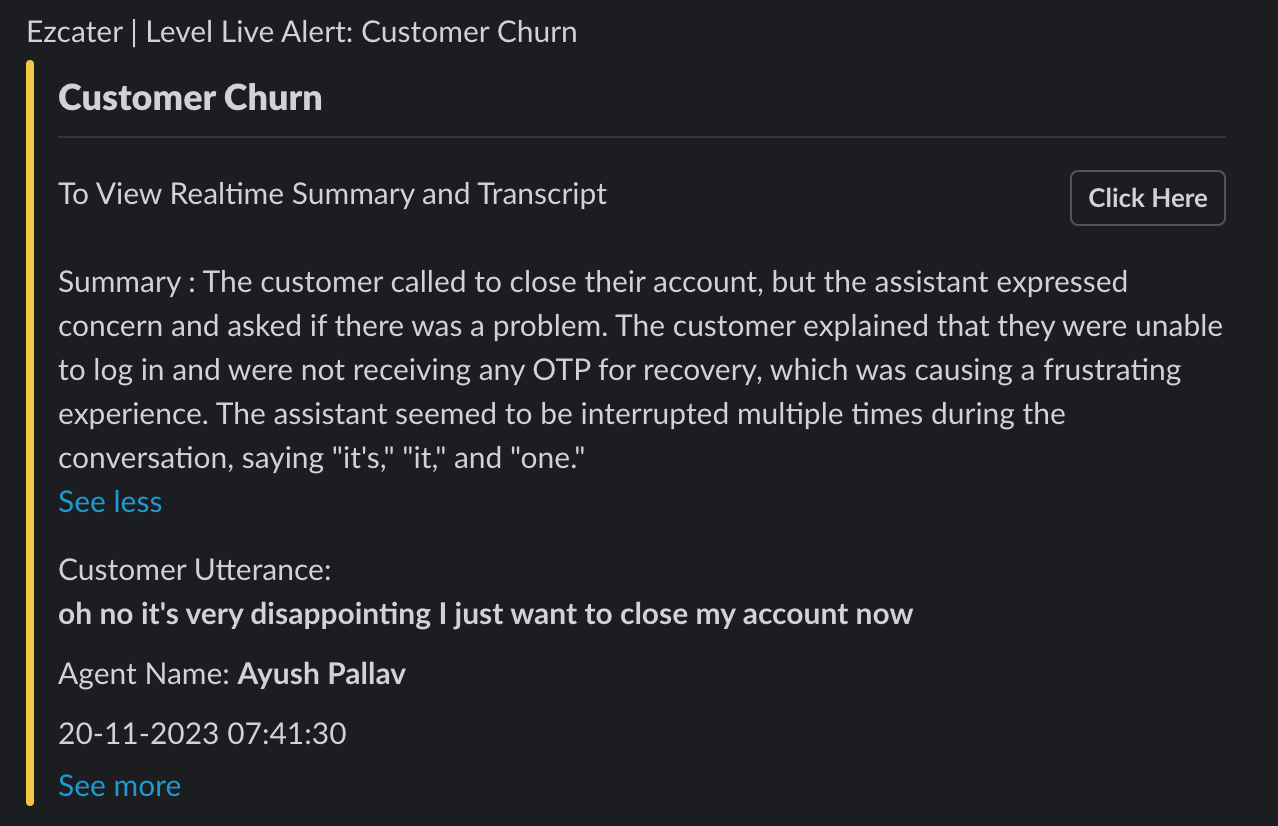
Pulling Insights When You Need Them
While some insights take hours or days to surface, Level AI’s Call Center Reporting delivers them when you need them, right as questions arise, whether through intuitive pre-built dashboards or customizable, on-demand queries.
This allows you to rapidly investigate emerging customer issues and uncover what’s really happening in customer conversations, without waiting for analysts or manually combing through call logs.
- Need to pinpoint which customer support topics have been driving dissatisfaction lately, especially around billing, pricing, or returns?
- Curious if recent interactions hinted at upsell opportunities that agents missed?
- Or maybe you're wondering whether customers are repeatedly asking about underused features or showing interest in better documentation or self-service tools?
Level AI makes these questions easy to answer. Its Query Builder lets you dig into the platform’s conversational data as well as information from connected systems like your CRM, ticketing tools, and survey platforms.
Whether you want to identify shifts in customer preferences — such as increased demand for certain channels or feature requests — or surface loyalty signals previously overlooked, Level AI’s flexible API and integrations with many major players in the CX space ensure broad, reliable access to external data.
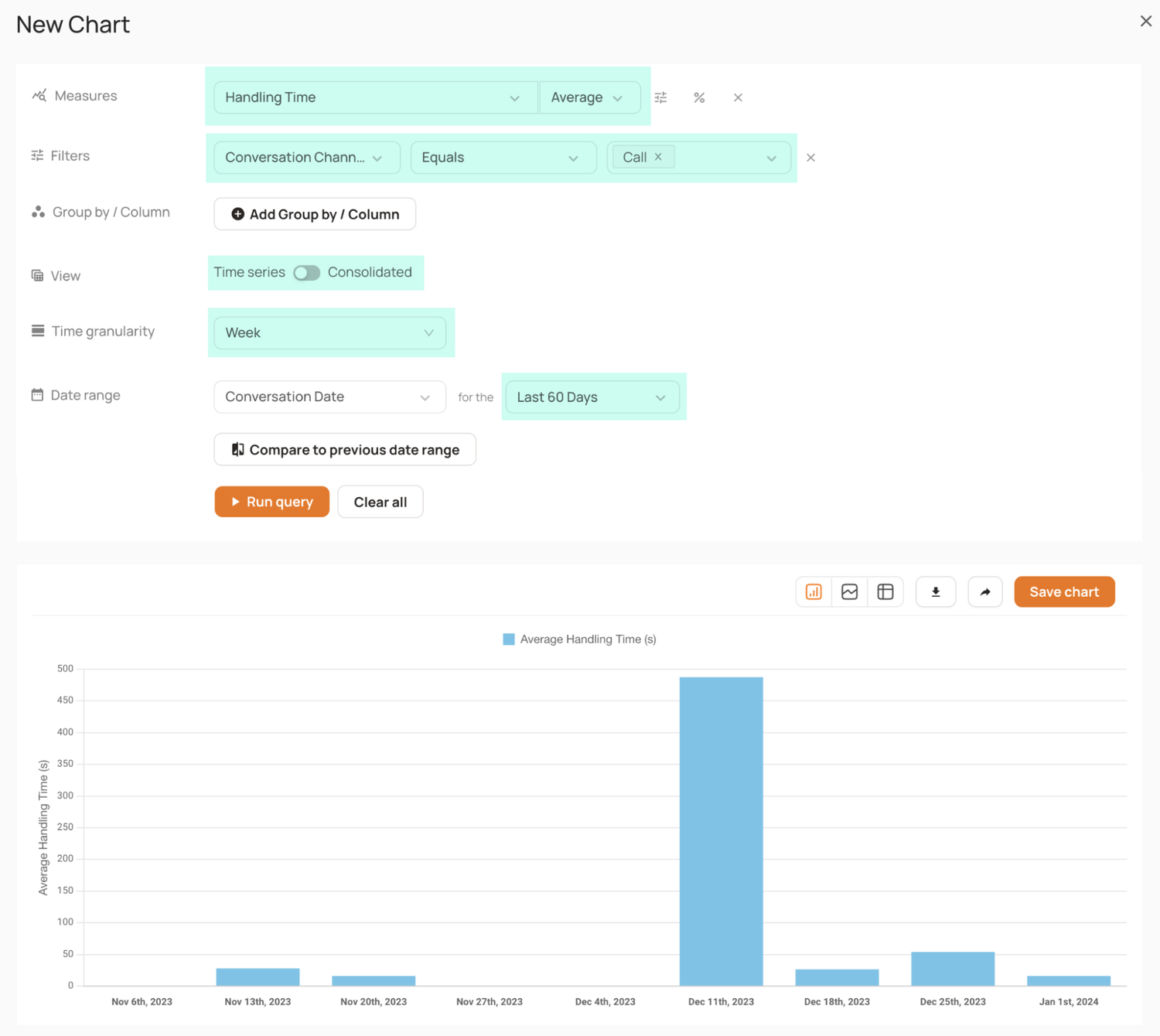
Plus, every call center analytics dashboard created through the Query Builder can be shared across teams, making it easy to align stakeholders around the same real-time insights.
See our article on how to monitor call center performance.
Turning Conversations Into Actionable CX Insights
Real-time reporting gives contact centers visibility into performance and operations as they happen, but to truly optimize customer experience, it must be paired with real-time insight into the customer’s perspective. That’s where immediate, unfiltered feedback from customer conversations becomes important.
Level AI’s VoC Insights harness the power of AI speech analytics and natural language processing to transform everyday customer conversations into meaningful CX intelligence. By analyzing 100% of interactions across all channels (not just a small sample), these insights are broader, more consistent, and more representative than traditional post-call surveys.
Surveys can still be valuable tools, especially for structured feedback on specific questions. But they come with well-known limitations: response rates are often low, and those who do reply tend to represent the extremes, either highly satisfied or deeply frustrated. Customers with more subtle or neutral perspectives frequently go unheard.
VoC Insights changes that. By passively analyzing real-time conversations as they unfold, the platform captures authentic, unsolicited customer feedback, fueling a range of customer analytics use cases. This provides a much more immediate and honest read on customer satisfaction and sentiment, without the delays or distortion of post-interaction surveys.
In addition to standard customer satisfaction scores and metrics like CSAT, NPS, and CES, Level AI surfaces deeper, less obvious trends, such as a surge in low sentiment related to billing issues or confusion around product usage.
These patterns are displayed in intuitive dashboards that make it easy to spot emerging problems and share findings across departments:
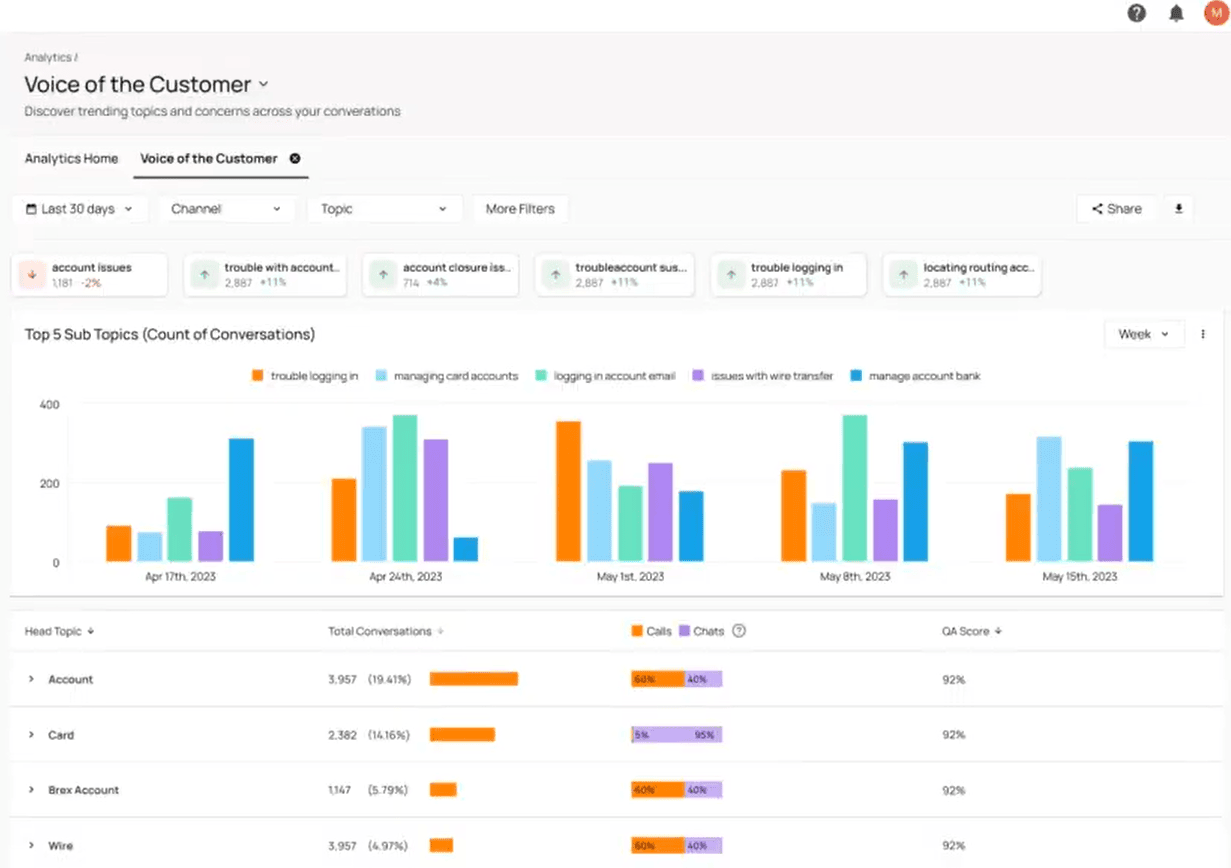
One financial services company, for example, used Level AI’s VoC Insights to detect a recurring theme: customers wanted more control over their interactions. That feedback led to the launch of a new self-service offering, which ultimately improved customer satisfaction and saved the business over $3 million in support costs.
See our most article on how to improve quality assurance in a call center.
To see how Level AI turns real-time customer conversations into actionable insights that drive better decisions and stronger outcomes, schedule a free demo today.
2. Zendesk
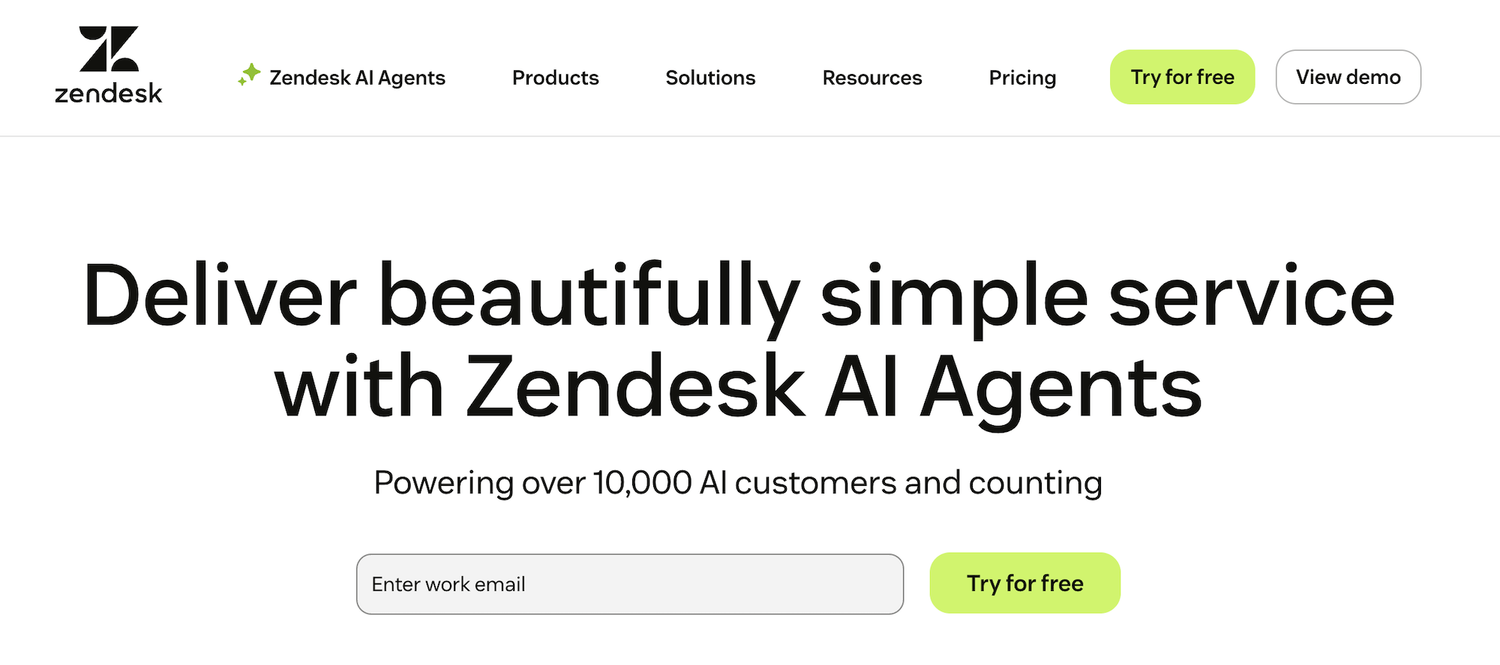
Zendesk is a customer service platform that helps call center teams stay on top of what’s happening in real-time. It gives supervisors live tools to watch calls, track customer behavior and how agents are doing, and to improve customer satisfaction.
Zendesk features include:
- A live dashboard showing which calls are happening, how long they’ve been going, who’s calling, and which agents are on the line.
- The capability for supervisors to listen to live calls without alerting the agent or customer.
- Real-time updates on key call center metrics like queue size, agent availability, and wait times.
- Tools for automatic transcription, sentiment analysis, and highlighting important conversation moments.
Plans for Zendesk Suite start at $55 per user per month (billed annually).
3. Kixie
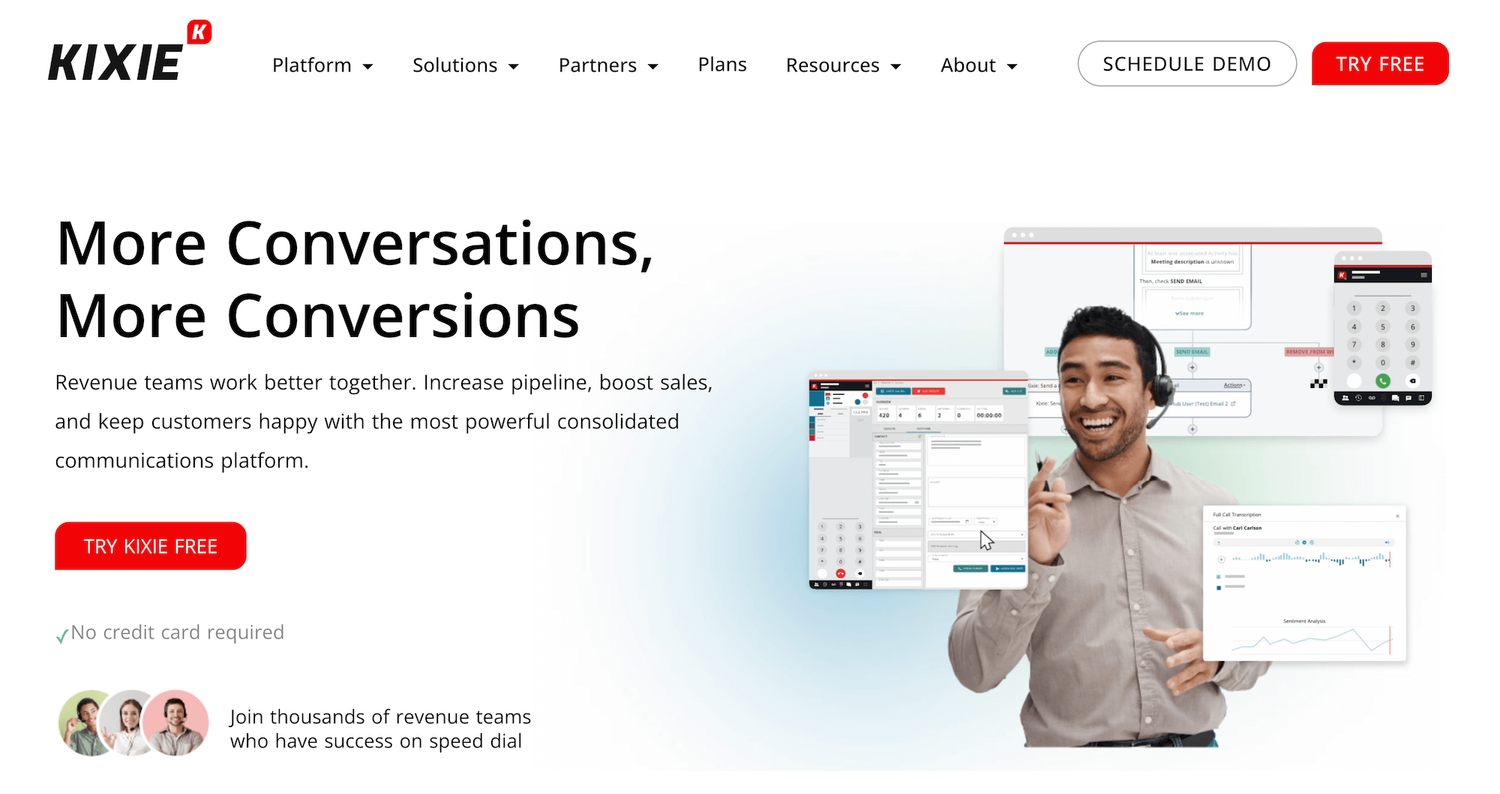
Kixie is a call center platform made for high-volume outreach and sales teams. It gives managers the tools to watch live calls, increase operational efficiency, help agents in real-time, and track and optimize team performance through easy-to-use dashboards.
Key features of Kixie include:
- The ability for managers to listen to live calls, coach agents privately without the customer hearing, or jump into calls when needed to assist or take over.
- Call center software that shows what every agent is doing in real-time, including who they’re speaking with and related CRM details.
- Real-time dashboards and contact center reporting that track key metrics for customer behavior like call volume, talk time, missed calls, and agent performance to help teams stay on track and motivated.
- Built-in tools for alerts, call center analytics, and speech analysis that notify managers of important events, highlight customer sentiment, track customer issues, and keep performance and compliance in check.
Kixie doesn’t disclose pricing on its website.
4. Freshcaller
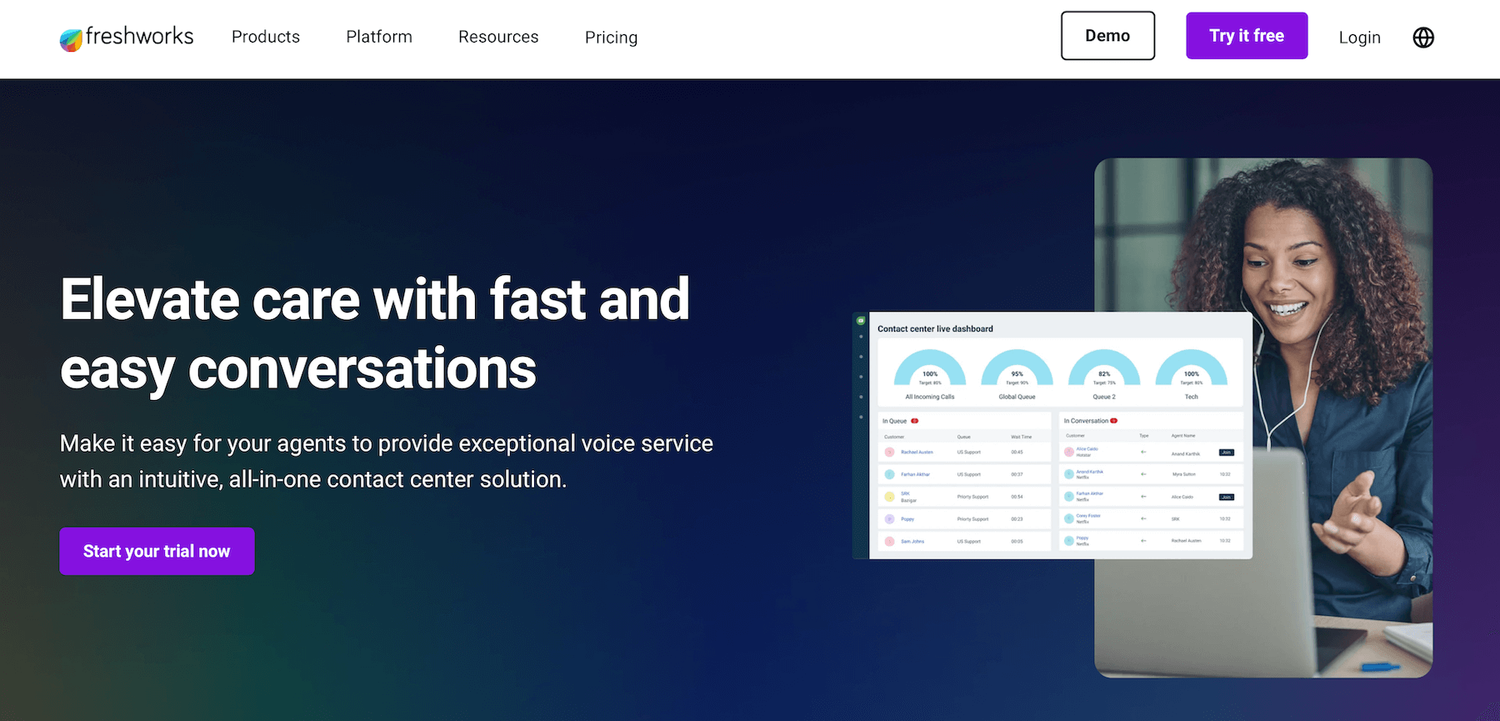
Freshcaller is a cloud-based phone system that helps customer service teams manage calls and allows supervisors to watch what’s happening in the call center in real time. They can check how many calls are coming in, see which call center agents are available, improve call center operations, and give feedback right away.
Important Freshcaller features include:
- Real-time dashboards that show call activity, queue status, agent availability, and call duration, along with tools for managers to listen in or join live calls when needed.
- Contact center reporting for tracking key performance metrics for customer behavior like wait times, call volume, retention, and abandonment rates, plus alerts that notify managers when service levels drop.
- Call recordings and automatic transcripts that parse raw data and allow supervisors to review conversations, along with features that let supervisors give feedback and optimize agent performance.
- Support for multiple communication channels, such as email and chat, combined with call center reporting tools that increase service quality and help teams understand call center performance and make informed decisions to improve customer satisfaction.
Freshcaller is free to try, and plans start at $15 per agent per month.
5. CloudTalk
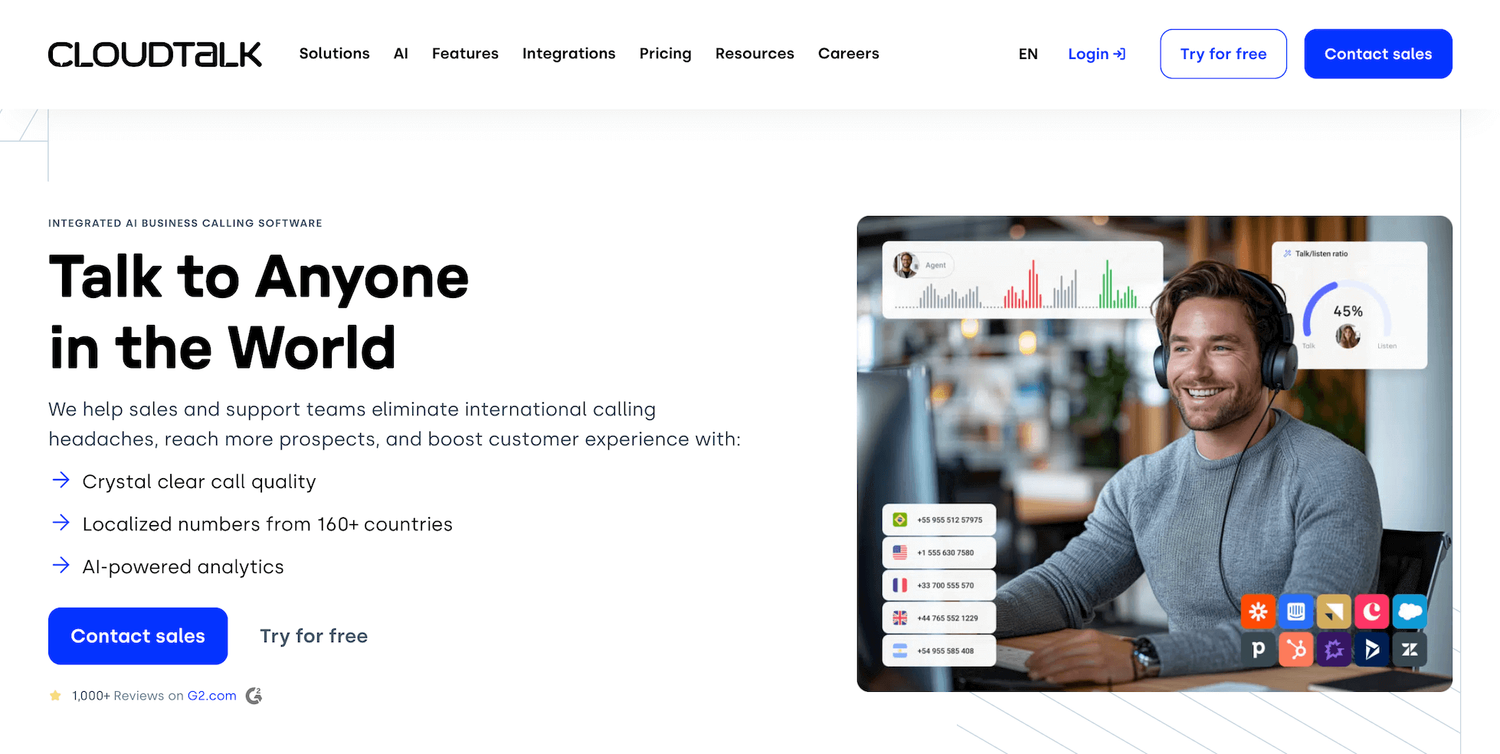
CloudTalk is a call center platform that lets customer service teams track live performance and optimize call quality, and allows managers to intervene quickly when necessary to coach call center agents.
Key features of CloudTalk are:
- A real-time dashboard that shows real-time data like call volume, wait times, and which agents are available.
- Live call monitoring so managers can listen to calls as they happen and offer help or coaching on the spot.
- AI-powered tools and call center software that analyze conversations and show customer emotions or problems during calls.
- Instant alerts and quality checks to help managers spot issues and give feedback right away to improve customer satisfaction.
CloudTalk’s starter plan begins at around $25 per user per month and includes call recording, unlimited call queuing, and automated call distribution.
Frequently Asked Questions
What are the most useful KPIs to track in real-time, and how do they differ from post-call metrics?
The most useful KPIs include call volume, average handle time, hold time, first call resolution, customer sentiment, and agent performance scores like InstaScore. These metrics help supervisors identify issues as they happen, like a frustrated customer or a struggling agent, so they can intervene immediately.
In contrast, post-call metrics provide a broader historical view that’s useful for trend analysis and long-term planning but it lacks the immediacy needed for making in-the-moment decisions or for supporting agents.
How Much Technical Setup or Training Is Required So I Can Effectively Use Real-Time Reporting Tools?
According to G2, Level AI users report a fast and easy onboarding process, and our call reporting dashboards are intuitive and simple to use, requiring minimal training. Level AI also offers pre-built integrations with the most popular contact center software and needs minimal IT support.
How Can Real-Time Reporting Support Team Performance Reviews or Long-Term Quality Improvement?
It gives managers live data on how agents are doing during calls, so instead of waiting until later to review calls, managers can spot problems in agent performance right away and give quick feedback. Over time, such corrective measures guide agents towards success and also help track patterns in who's doing well and what can be improved.
Call center real-time reporting also makes performance reviews more fair and useful, since it gives managers more context behind metrics like handle time or customer sentiment.
See the Whole Conversation As It’s Happening
Traditional call center reports tell you what’s already happened. Level AI shows you what’s happening now — across every interaction, agent, and channel.
From rising customer frustration to missed upsell cues, our real-time tools surface the signals that matter most and help you optimize performance and decision-making in the moment, aligning with call center quality assurance best practices.
Book a demo and see how live insights can transform your customer experience.
Keep reading
View all

